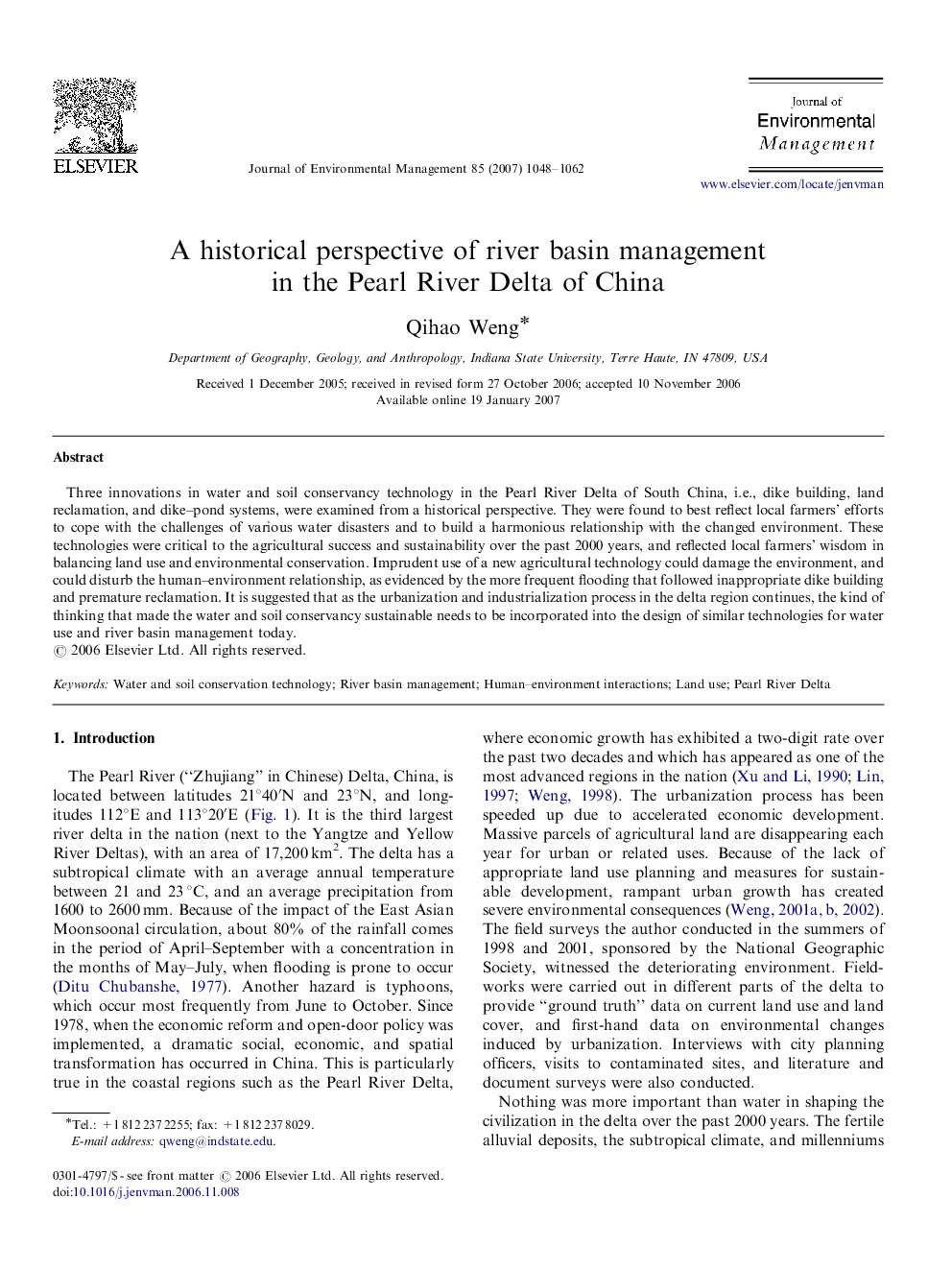| Article ID | Journal | Published Year | Pages | File Type |
|---|---|---|---|---|
| 1058508 | Journal of Environmental Management | 2007 | 15 Pages |
Three innovations in water and soil conservancy technology in the Pearl River Delta of South China, i.e., dike building, land reclamation, and dike–pond systems, were examined from a historical perspective. They were found to best reflect local farmers’ efforts to cope with the challenges of various water disasters and to build a harmonious relationship with the changed environment. These technologies were critical to the agricultural success and sustainability over the past 2000 years, and reflected local farmers’ wisdom in balancing land use and environmental conservation. Imprudent use of a new agricultural technology could damage the environment, and could disturb the human–environment relationship, as evidenced by the more frequent flooding that followed inappropriate dike building and premature reclamation. It is suggested that as the urbanization and industrialization process in the delta region continues, the kind of thinking that made the water and soil conservancy sustainable needs to be incorporated into the design of similar technologies for water use and river basin management today.
